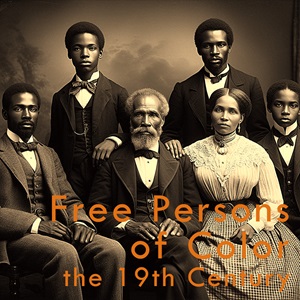 Enslavement
Enslavementto
freedom


Vibrant Black communities arise
from the ashes of slavery
Study Areas
Dauphin County Miscellaneous Items
The items below are small articles and bits and pieces of information that are interesting but do not justify the creation of a separate page.
Tomatoes Introduced by African Americans
The first use of tomatoes as food in Dauphin County, rather than as decorative plants, occurred in 1814 through the instruction of an African American woman in York. The woman, described only as a "West India negro," had supplied tomatoes to a local tavern keeper who served them stewed according to her recipe.
Prior to this, tomatoes were grown in Harrisburg by William Maclay in his gardens at Front and South Streets, but they were grown strictly as decorative plants, as the stalks and particularly the fruits were believed to be poisonous. It was not until local militiamen, returning from York where they were stationed during the War of 1812, talked about a delicious dish that was being served in one of that town's finer taverns.
Colonel John Roberts, who was then an orderly sergeant in Captain Walker's company of the first battalion, had dined on stewed tomatoes while in a York tavern and "found them excellent." When he inquired about the dish, he was directed to the African American woman who gave him seeds and recipes on how to prepare the ripe fruit. A year later Roberts' own plants, begun from tomato seeds from this woman, began yielding the tomatoes that became the first to be eaten in Harrisburg.
Source:
Luther Reily Kelker, History of Dauphin County, Pennsylvania, Vol. I (New York, The Lewis Publishing Company, 1907) p. 101.
Wesley Union Church Founded 1829
With 115 members in 1830, Harrisburg constituted the largest stop on the African Methodist Episcopal Zion Church circuit through central Pennsylvania. It is not surprising, then, that the need to recognize the Harrisburg community, which contained one seventh of the circuit membership, as a regular station, with a regularly assigned pastor, had already been recognized and acted upon.
On August 20, 1829, the Wesley Union Church was organized in a small log building at the corner of Third and Mulberry Streets, in the neighborhood known as Judystown. The organizers were Elder Jacob D. Richardson, originally from York, Deacon David Stevens and Brother Matthias Dorsey. At the A.M.E. conference in Philadelphia the following year, Rev. Stevens was ordained an elder and given charge of the Harrisburg Circuit, which included New Market (15 members), Chambersburg (72 members), Shippensburg (17 members), York (40 members), Swatara/Middletown (40 members) and Harrsiburg.
Rev. Stevens was aided by Deacon David H. Crosby, Deacon Samuel Johnson and Preacher, later Superintendent, George Galbraith. The new church occupied a large role in the community, endorsed education and took unwavering stands on moral issues. It became an important station on the Underground Railroad, and many of its members were active in aiding fugitive slaves.
When Rev. Jacob D. Richardson assumed the pastorate from Rev. Stevens, he added a day school in the log church for the education of the children of the local African American community and became their teacher. The cost of maintaining this school was paid by the county, but in 1832 the county ceased payment of his salary, and directed that the children should attend the Lancasterian School on Walnut Street. One of the children taught by Richardson and subsequently sent to the Lancasterian School was Joseph Popel, who became a respected community figure.
Despite expanding the log church by sixteen feet, the congregation soon outgrew their place of worship, and in November 1839 moved into a new brick building at the corner of South Street and Tanner's Alley. The Rev. David Stevens had again assumed the pastorate for the move to this new location. In 1862 the congregation rebuilt the church, making it larger, and changing the main entrance from Tanner's Alley to South Street. During the rebuilding they held services in Bennett's Hall on Tanner's Alley. The Rev. Abram Cole became the first pastor in the rebuilt brick church. After several more renovations, the church was finally forced from its home by the demolition of the neighborhood to make room for the Capitol expansion project. Wesley Union A.M.E. Zion Church is now located at Fifth and Camp Streets, Harrisburg.
Sources:
Capital Street Presbyterian Church Founded 1858
Plans for the formation of a Presbyterian church that would specifically serve Harrisburg's African American community were formed in September 1857, and less than eight months later an active congregation began worshipping in a rented room on Walnut Street.
Harrisburg lawyer and judge Mordecai McKinney conferred with resident Joseph Bustill on the need for an additional Presbyterian Church. Bustill, a native Philadelphian who was then living in Harrisburg and working as an Underground Railroad activist, contacted an old family friend, the Rev. Charles W. Gardner of Philadelphia to discuss the situation. Gardner, a highly respected Presbyterian minister, came to Harrisburg on September 20, 1857 and convinced the pastor of the main church, The Rev. William R. DeWitt, to support and aid the new church.
The fledgling congregation held its first service in the spring of 1858 in a large rented room at Walnut Street and River Alley. They immediately organized a Sunday School and invited Rev. Gardner to be their pastor. Though over eighty years old, he accepted the invitation, and in early April1858 preached his first sermon as their first pastor. By 1867 a stone church was built at the corner of Capital and Forster Streets, giving the church the name that is still in use today. It is now located at 1401 Cumberland Street in the city.
The charter members were: Jeremiah Kelley, Hanna Kelley, Hiram Baker, Nancy Cristy, Matilda Greenly, Zillah Gallaway, Sarah Hawkins, Curry Taylor, Elizabeth Taylor, William White, Sarah Kelley and Hannah Humphreys.
Source:
Luther Reily Kelker, History of Dauphin County, Pennsylvania, Vol. I (New York, The Lewis Publishing Company, 1907) p. 278.